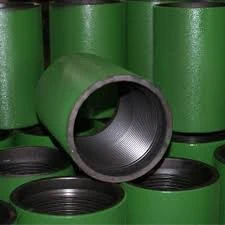- Afrikaans
- Albanian
- Amharic
- Arabic
- Armenian
- Azerbaijani
- Basque
- Belarusian
- Bengali
- Bosnian
- Bulgarian
- Catalan
- Cebuano
- Corsican
- Croatian
- Czech
- Danish
- Dutch
- English
- Esperanto
- Estonian
- Finnish
- French
- Frisian
- Galician
- Georgian
- German
- Greek
- Gujarati
- Haitian Creole
- hausa
- hawaiian
- Hebrew
- Hindi
- Miao
- Hungarian
- Icelandic
- igbo
- Indonesian
- irish
- Italian
- Japanese
- Javanese
- Kannada
- kazakh
- Khmer
- Rwandese
- Korean
- Kurdish
- Kyrgyz
- Lao
- Latin
- Latvian
- Lithuanian
- Luxembourgish
- Macedonian
- Malgashi
- Malay
- Malayalam
- Maltese
- Maori
- Marathi
- Mongolian
- Myanmar
- Nepali
- Norwegian
- Norwegian
- Occitan
- Pashto
- Persian
- Polish
- Portuguese
- Punjabi
- Romanian
- Russian
- Samoan
- Scottish Gaelic
- Serbian
- Sesotho
- Shona
- Sindhi
- Sinhala
- Slovak
- Slovenian
- Somali
- Spanish
- Sundanese
- Swahili
- Swedish
- Tagalog
- Tajik
- Tamil
- Tatar
- Telugu
- Thai
- Turkish
- Turkmen
- Ukrainian
- Urdu
- Uighur
- Uzbek
- Vietnamese
- Welsh
- Bantu
- Yiddish
- Yoruba
- Zulu
perforated pup joints
Understanding Perforated Pup Joints Key Components in Pipeline Systems
In the realm of oil and gas drilling, various components ensure that operations are safe, efficient, and effective. Among these components, perforated pup joints play a pivotal role. These specialized pieces of pipe are designed to facilitate fluid flow while serving as a robust connection point within a well or pipeline system. Understanding perforated pup joints, their design, applications, and benefits is essential for professionals in the energy sector.
What Are Perforated Pup Joints?
Perforated pup joints are short lengths of pipe that are specifically perforated to allow the passage of fluids. Typically made from high-strength steel or other durable materials, these joints are used to connect sections of tubing in drilling operations. They are equipped with holes or slots along their lengths, which strategically increase the available surface area for liquid or gas to flow through. This design is particularly beneficial in maximizing flow efficiency while maintaining structural integrity.
Design and Construction
The construction of perforated pup joints is crucial for their performance. Manufacturers utilize strong materials that can withstand extreme pressures and corrosive environments typically found in oil and gas extraction. The perforation patterns are designed based on the specific needs of the operation, including factors such as flow rate, type of fluid, and the pressure within the system. Proper engineering and quality control are vital to ensure that each joint meets industry standards and performs reliably under challenging conditions.
Applications in the Oil and Gas Industry
Perforated pup joints are predominantly used in various applications within the oil and gas industry
1. Drilling Operations They are commonly employed during drilling to connect different sections of drill pipe or tubing, providing necessary support and allowing for fluid circulation during the drilling process.
2. Completion Tools In well completion, these joints can be utilized to facilitate the flow of hydrocarbons from the reservoir to the surface, enabling efficient extraction.
perforated pup joints

3. Production Facilities Perforated pup joints are integral in production systems, where they help manage the flow of oil, gas, and water, ensuring balanced extraction and minimizing bottlenecks.
4. Water Injection Systems In secondary recovery methods, such as water flooding, perforated pup joints aid in the injection of water into the reservoir, enhancing oil recovery rates.
Benefits of Using Perforated Pup Joints
The incorporation of perforated pup joints in pipeline and drilling systems offers several advantages
- Enhanced Fluid Flow The design of these joints maximizes the flow capacity, reducing pressure drops within the system and improving overall efficiency.
- Easy Installation Their short lengths make them easy to handle and install, facilitating quick assembly and disassembly when necessary.
- Versatility Perforated pup joints can be customized with various perforation sizes and patterns to suit specific operational needs, allowing for tailored solutions in diverse applications.
- Cost-Effectiveness By optimizing flow and minimizing downtime due to maintenance or blockages, these components can contribute to reducing operational costs over time.
Conclusion
Perforated pup joints are an essential component in the oil and gas industry, providing critical support and functionality in various applications. Their unique design facilitates efficient fluid flow while ensuring structural integrity under high-pressure conditions. As the industry continues to evolve and seek more efficient extraction methods, the significance of such specialized components will undoubtedly grow. For engineers, drillers, and other professionals, understanding the role and advantages of perforated pup joints can lead to improved operational strategies and enhanced productivity within the sector. Embracing innovative technologies and quality materials in their production will remain pivotal in meeting the demands of the ever-changing energy landscape.
-
Well Casing Extension Couplings – Applications and InstallationNewsJun.06,2025
-
Types of Crossover Subs in Drilling & CompletionNewsJun.06,2025
-
Key Features of High-Quality Tubing Pup JointsNewsJun.06,2025
-
Installation and Maintenance Tips for Steel Couplings for PipeNewsJun.06,2025
-
How to Select the Right Pup Joint for Oil & Gas OperationsNewsJun.06,2025
-
Applications of Stainless Steel Pipe CouplingsNewsJun.06,2025







